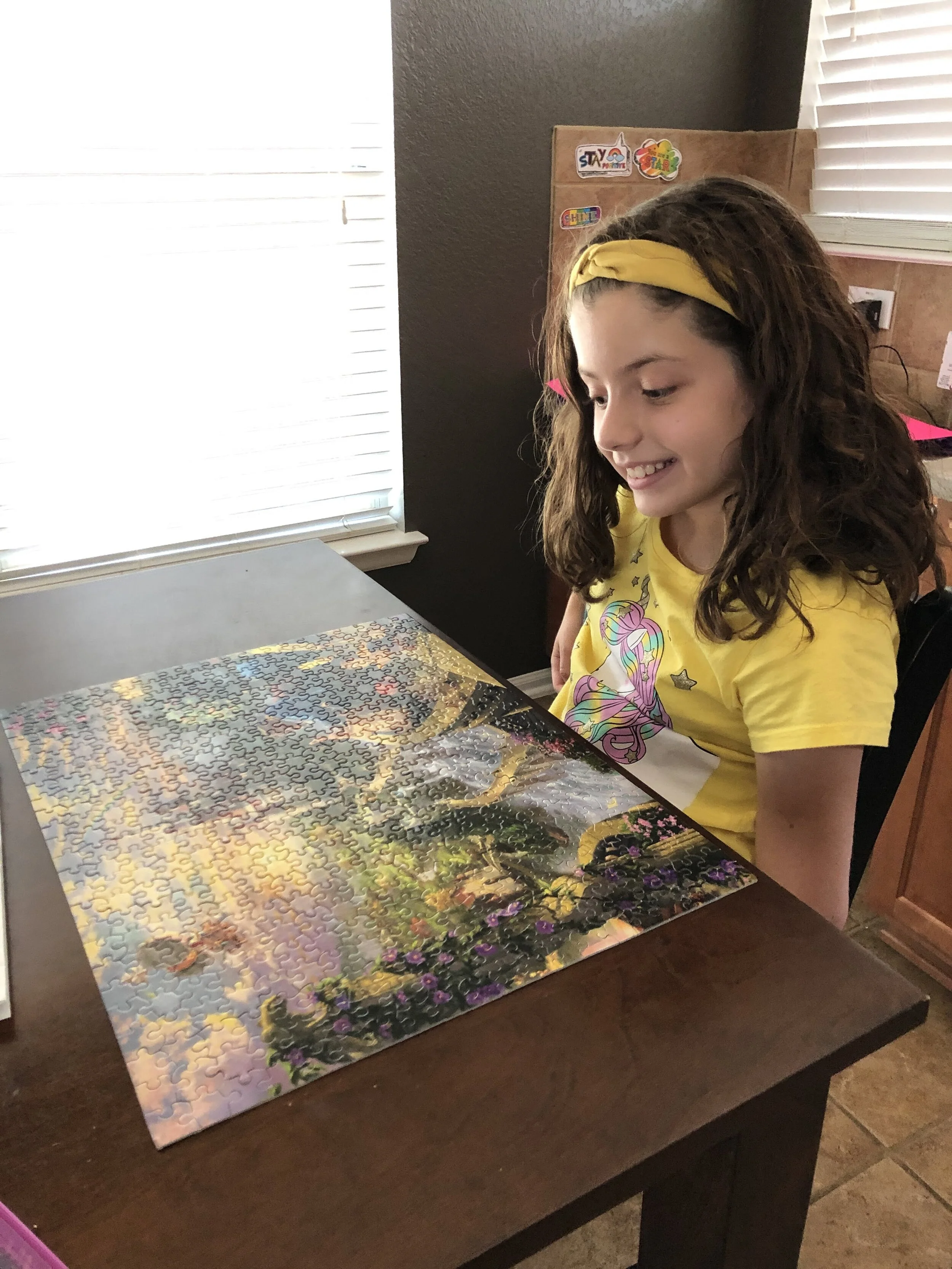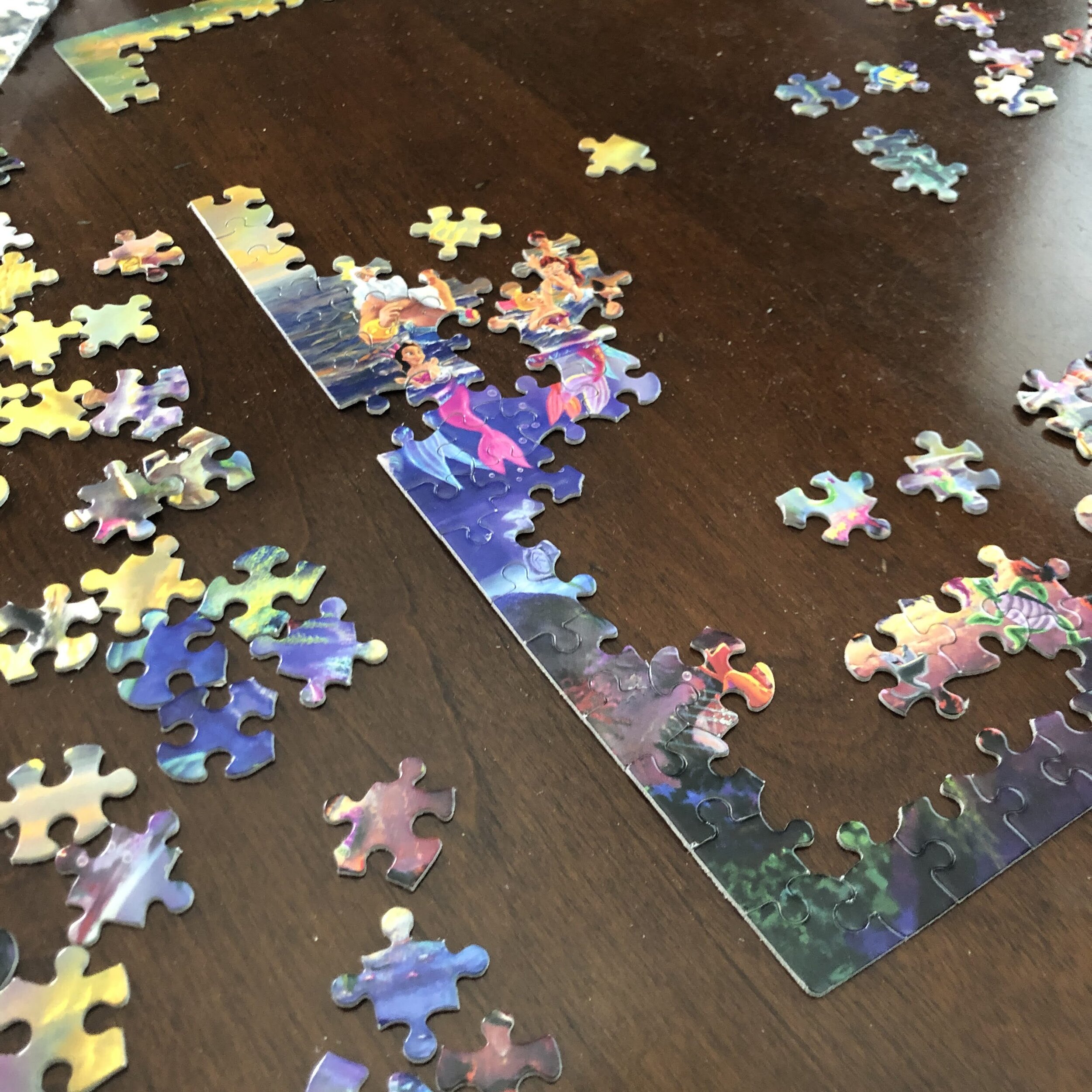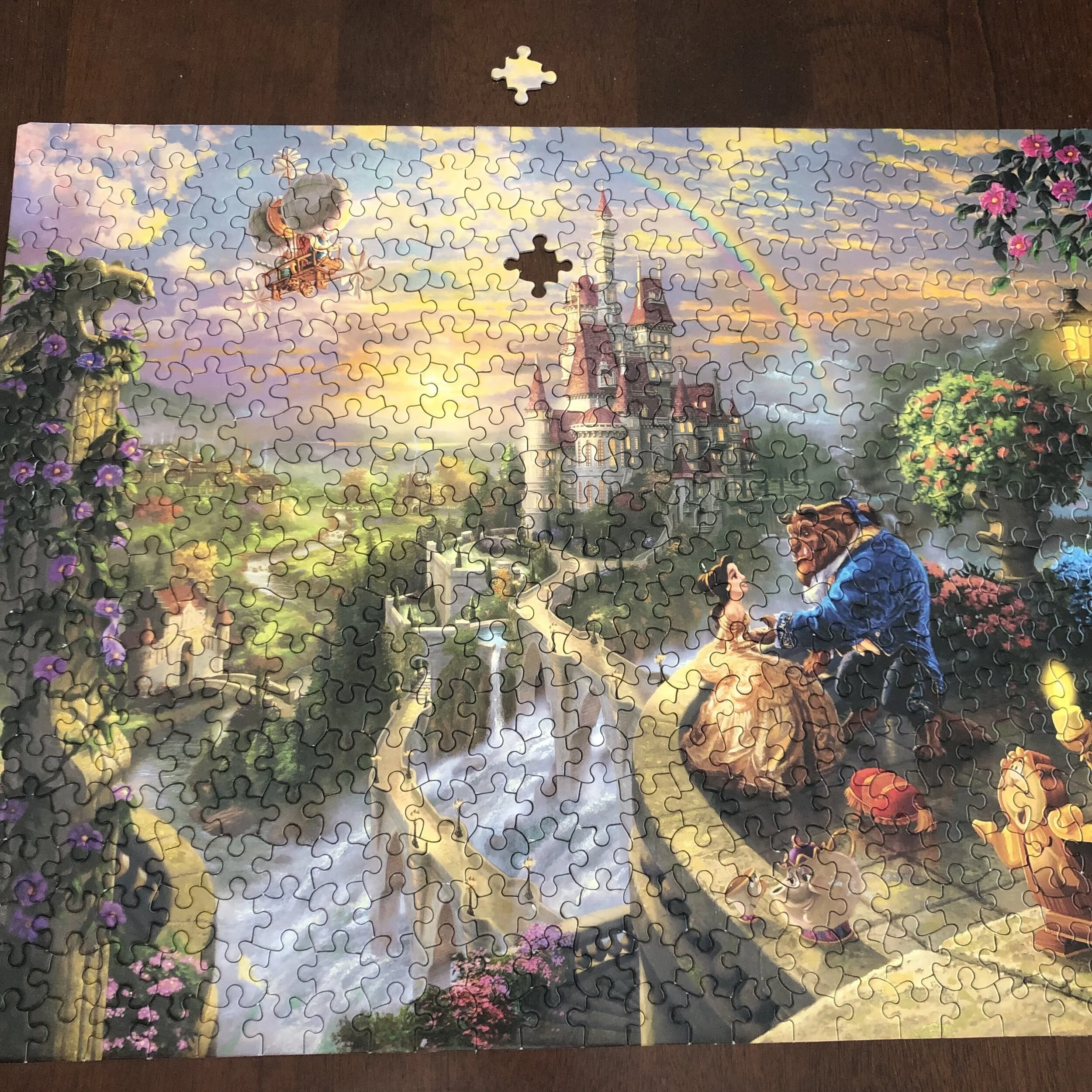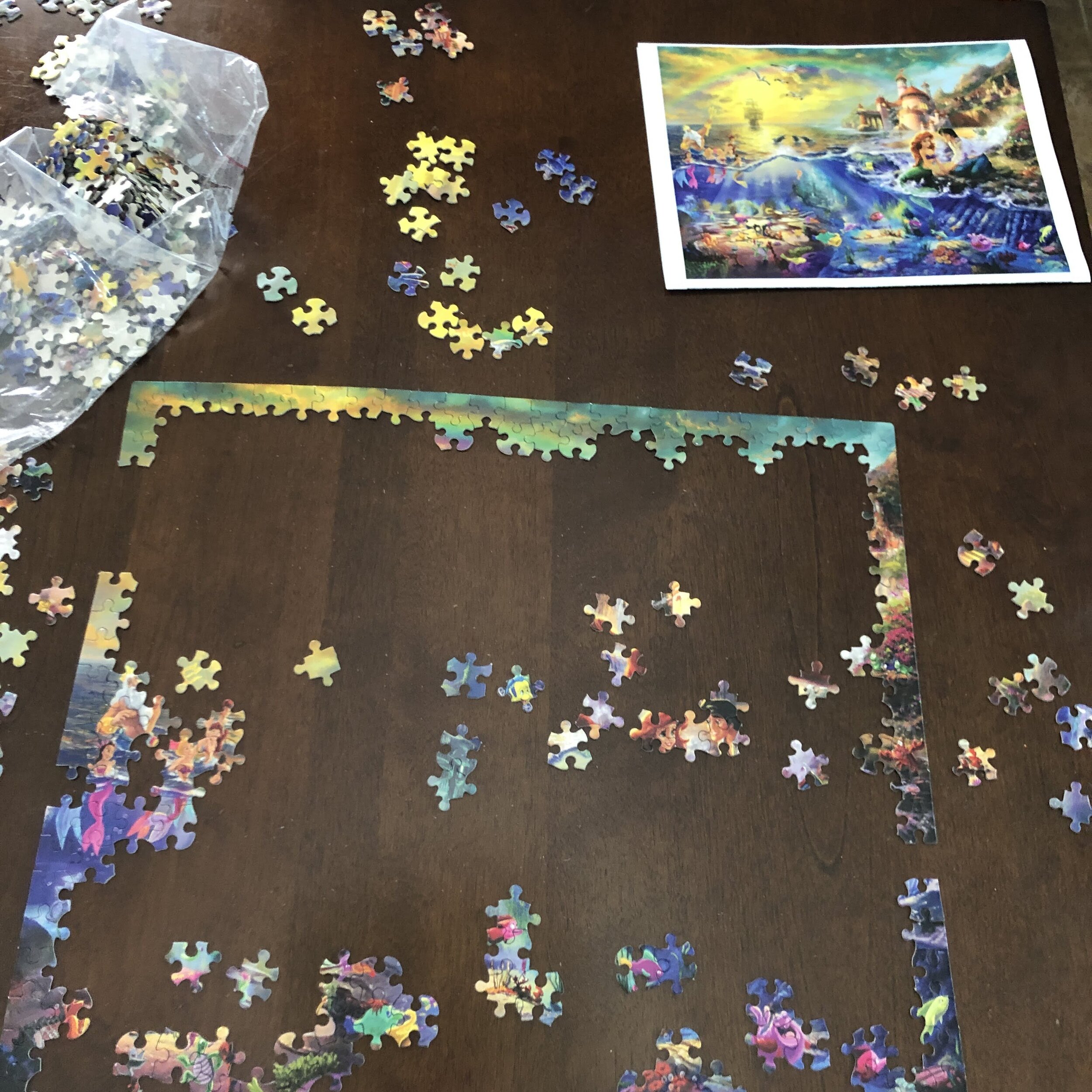How Puzzles Help with PR Planning
We jumped on the puzzle trend at my home during the pandemic to find a way to keep our kids off screens during “bored” times. Truth: I had never completed a puzzle that had more than 100 pieces before! As an adult, I should be able to complete a 500-piece puzzle. Right?
Since I’m an accomplished adult, I thought I should push myself with larger count puzzles. I purchased our first 500-piece puzzle from the Art Puzzle Project, which donates a puzzle to Meals on Wheels San Antonio for every puzzle purchased. Win for them, win for Meals on Wheels clients, and win for my family!
Here’s what I imagined -- opening a fresh cardboard-scented puzzle box brings a surge of excitement and anticipation of a new adventure. My reality -- we opened the box and looked at all the pieces and I immediately felt overwhelmed. How in the world were we going to sort this all out? What was the best strategy to put this together?
The Discomfort of a Challenge
That overwhelmed/puzzled/anxious/hopeful feeling was familiar. It’s the same feeling I get when starting the strategic communication planning process. Ever sit down to write a public relations, marketing, social media, or communications plan and get that swirl in your stomach? That’s the feeling.
As you remove puzzle pieces from their box, it is easy to feel anxious by the daunting task ahead. How does this go together? Where should I start? These sentiments are shared by even the most seasoned in the communication industry when embarking on something new. Although each puzzle is different, starting with research (review the puzzle image), planning your approach (starting with the puzzle edges is a solid strategy), and taking it one piece at a time as you monitor progress will ultimately lead to success.
Frame Your Approach
In puzzles and in PR planning, the first step is getting an idea of the big picture. What is the goal of this effort? What patterns or connections can come together to meet your objectives? Like starting with the puzzle edges, I start journaling as an outline of information. Jotting down ideas, tactics, or other points of inspiration that I can fit into a plan later is helpful. I may come up with something while walking, chatting with a colleague, or searching online for something else entirely. These ideas may seem too tactical to write a plan around, but write them down and come back to those scraps. Perhaps that silly idea is the piece that connects other opportunities together!
Work on Something You Enjoy
I have the same philosophy about starting new puzzles and onboarding new projects or clients. The end goal has to excite me. In puzzles, this means finding artwork that makes me smile as we see the image come together. With clients and campaigns, this means finding work that gives me that same excitement inside. In both instances, while you’re doing the project it can be hard and taxing but reaching the end goal is something you can look forward to.
Finding Your Groove
There’s nothing like the feeling of being “on a roll” and feeling the click of pieces coming together. With puzzles and planning, it’s easy to become fatigued and hit a mental block. I always know when I need to get up, do something else and come back to the work. Pieces just don’t fit together anymore or I can’t see the relationship between areas. Fresh eyes can make a big difference. When we honor that part of the process and take a break, the connections are suddenly apparent again when we restart.
Conquering that first 500-piece puzzle was something my daughter and I celebrated. She learned a great lesson about working through discomfort to achieve something and working on projects when rested for the best results. Since then, we’ve found that we’re faster and better able to find the right fits with puzzles. Same with planning -- with each new plan you’ll build on your past experience and assemble it a bit better and probably faster than before.
That first 500-piece puzzle took us about a week to complete. By the next puzzle, we cut down that time to just a day and a half. Not only are we now more confident in our approach, but recognizing that “overwhelmed” feeling makes it less uncomfortable to us when we encounter it again. That just means we’re opening up a new adventure that we’ll piece together in time.






